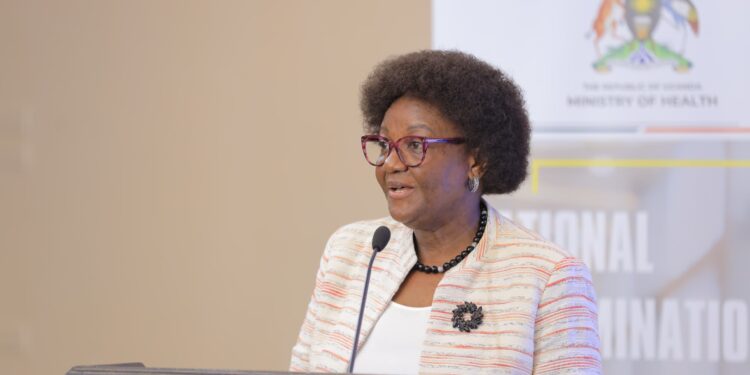Uganda’s innovative community-based HIV care approach is showing promising results, with a new evaluation revealing a 74.5% viral load re-suppression rate among participants—marking a significant stride in HIV management.
The findings were unveiled on April 30, 2025, at Speke Resort Munyonyo, following a joint evaluation by the Ministry of Health and Makerere University School of Public Health under the METS program, with support from PEPFAR.
“This model represents a crucial shift toward patient-centered care,” said Dr. Simon Muhumuza, Senior Technical Advisor for Health Systems Strengthening at Makerere University. “By bringing services directly to communities, we’re seeing real impacts where they matter most.”
The Integrated Community-Based HIV Service Delivery Model (ICSDM), launched in 2023, targets patients with high viral loads—the group most vulnerable to transmitting the virus and experiencing complications. In Mubende district alone, the model achieved an impressive 93.8% re-suppression rate.
Dr. Rhoda Wanyenze, Dean of Makerere University School of Public Health, praised the locally-led evaluation and urged the government to act on the evidence.
“We noticed that most impact evaluations in Africa, including Uganda, are often led by external experts. However, we have now built the capacity through our academic programs to conduct rigorous evaluations locally, which is a critical part of our strategic plan 2025–2030. We welcome partners to engage with us,” she said.

She further acknowledged the long-standing U.S. support through CDC and PEPFAR, highlighting the critical role of evidence-based health programming: “The strong partnership between our School and the Ministry of Health, supported by the American people, is not only improving the health of Ugandans but grounding interventions in solid evidence.”
The $79,395 pilot spanned four regions—Acholi, Rwenzori, Mubende, and Kayunga-Mukono—reaching 25 health facilities. Evaluation data from October 2023 to May 2024 included 711 patient interviews and health records analysis.
Key findings revealed that while 8% of people living with HIV had high viral loads (peaking at 13.3% in Acholi), 90% of those unsuppressed were linked to community health workers. Of these, over a third (34.4%) were enrolled in the ICSDM, with the Rwenzori region contributing 64.4% of cases. Private not-for-profit facilities reported the highest re-suppression rates at 90%.
“The program specifically targets those with unsuppressed viral loads—the individuals most at risk of transmitting HIV and facing health complications,” explained Dr. Robert Mutumba of the Ministry of Health’s AIDS Control Program.
While officials lauded the model for strengthening provider-patient relationships and reducing clinic time, they flagged challenges such as stigma and gaps in community health worker support.
Experts recommend expanded training for community health workers and deeper cost-effectiveness analysis to enhance the model’s scalability. As global health partners look for sustainable approaches to HIV care, Uganda’s experience could offer a blueprint for success.








